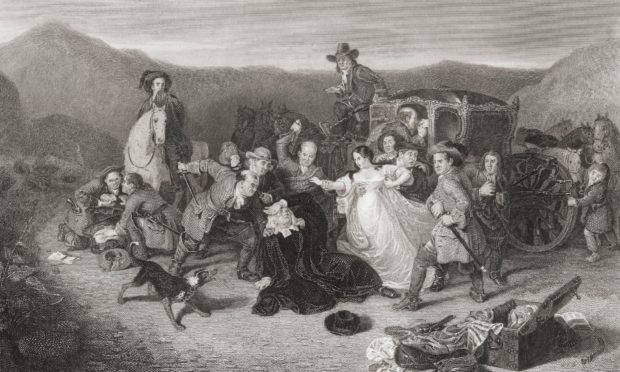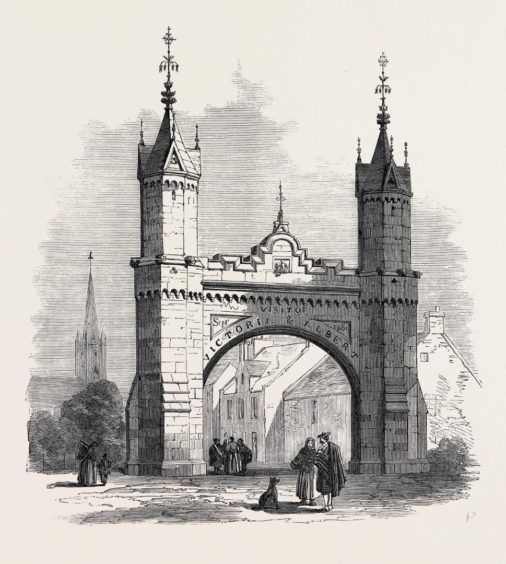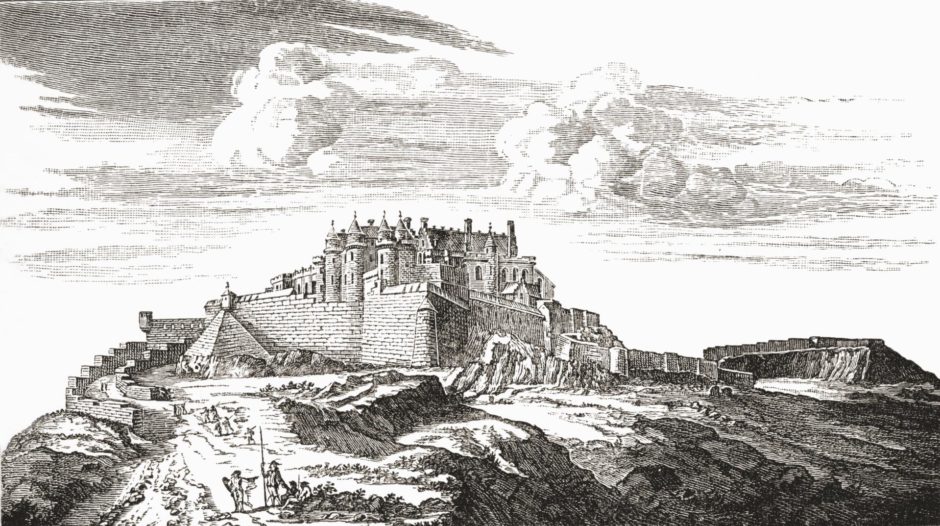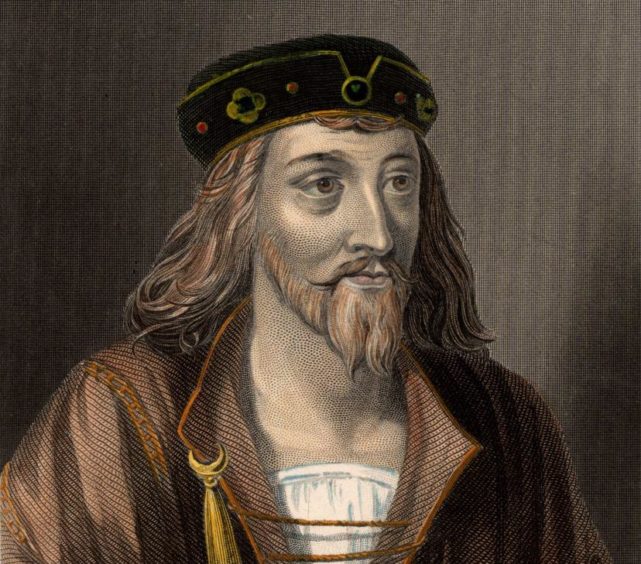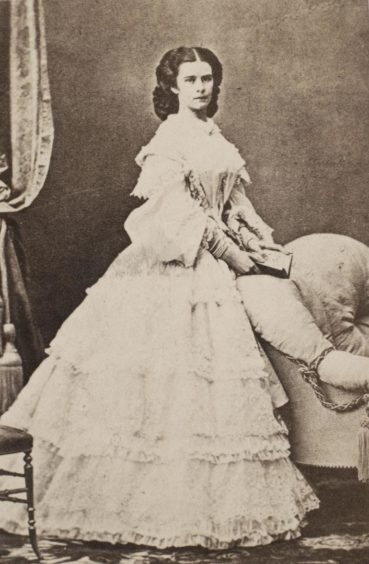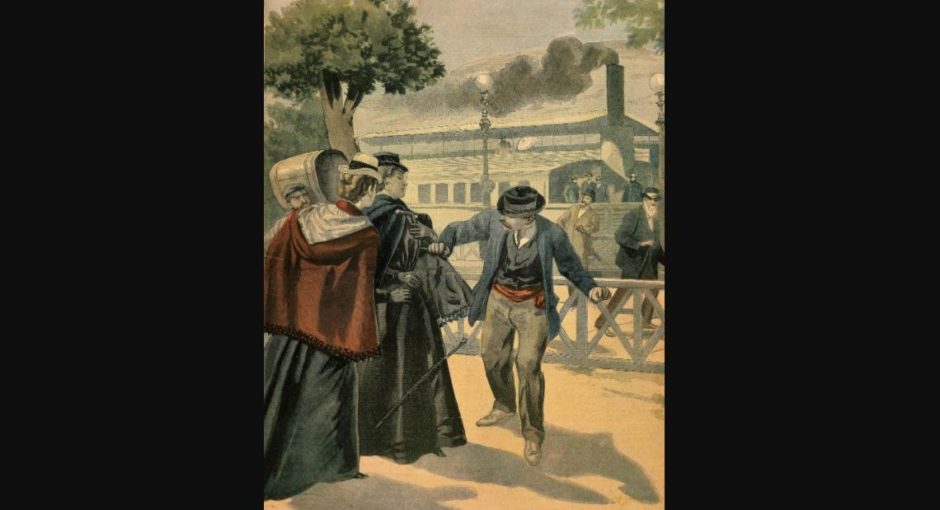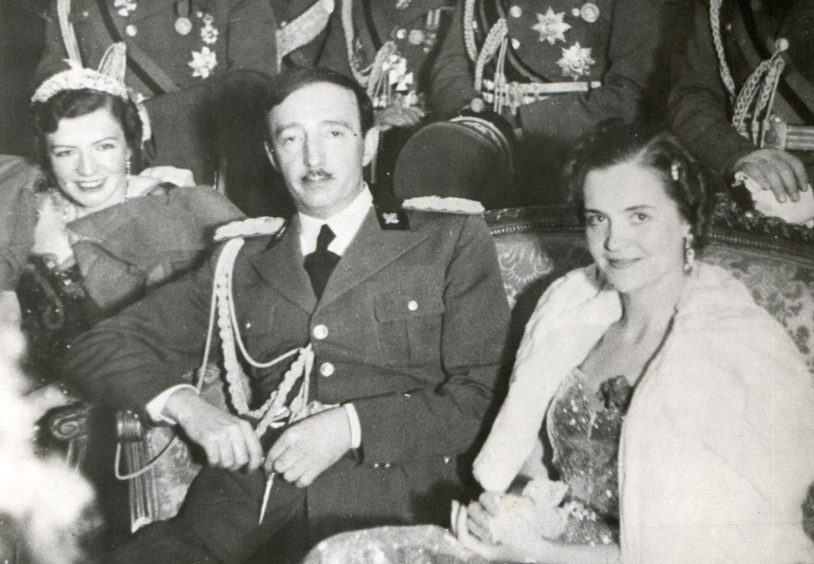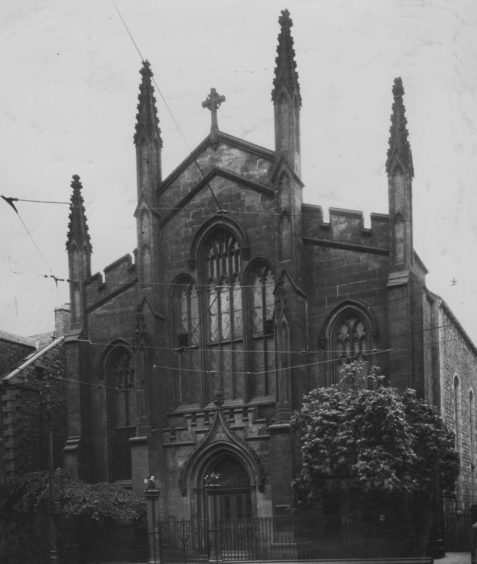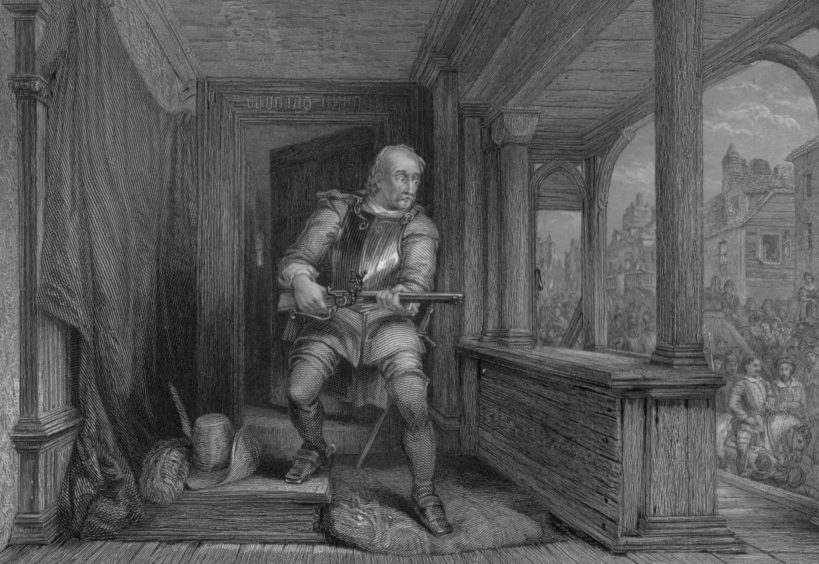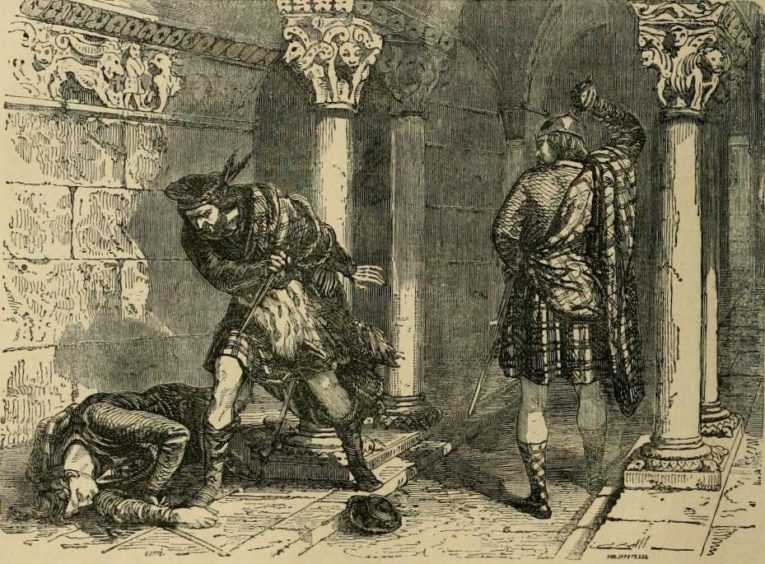Was the tiny village of Fettercairn the site of history’s most bizarre assassination? That’s the question posed by John Withington, the author of Assassins’ Deeds, which publishes today. Gayle Ritchie finds out more.
The Swiss military leader murdered by a man dressed as a bear.
The Austrian Empress killed by a needle so fine she didn’t realise she’d been stabbed.
But perhaps the prize for the weirdest assassination in history should go to Lady Finella, who lived in the village of Fettercairn in the Mearns and used a booby-trapped statuette to snare a king.
Author John Withington’s new book Assassins’ Deeds: A History of Assassination from Ancient Egypt to the Present Day, tells how in 995, King Kenneth II of Scotland was killed by Finella after falling victim to her cunning death trap.
“King Kenneth was trying to secure the succession for his son, Malcolm, but this meant putting a number of noses out of joint,” explains John, a leading disaster historian and former TV producer and journalist.
“In those days, the Scottish throne did not pass from father to son.
“Instead the king’s successor was selected from all the adult male descendants of previous kings.
“The upside was supposed to be that you did not get underage monarchs. The downside was that there were plenty of disputes.”
Writing in the 14th Century, John of Fordun, a Scottish chronicler born in Fordoun in the Mearns, said many nobles opposed Kenneth, and that Constantine the Bald plotted “unceasingly” against him.
He and his supporters persuaded the “wily” Finele – also known as Finella – daughter of the Earl of Angus, to help them.
She had a grudge against Kenneth because he had had her son put to death.
In an “out-of-the-way little cottage” in Fettercairn, she set a trap.
“In spite of her son’s fate, Finele always presented ‘a cheerful countenance’ to the king, and ‘beguiled him by flattery and treacherous words’,” says John.
“One day when he was out hunting, she saw him and fell to her knees.
“She ‘besought him with great importunity to come into her house’, affirming that her son had deserved his punishment, and saying that if Kenneth did not come, she would be afraid she was out of favour with him and that he believed the tales of ‘spiteful’ folk who claimed she was disloyal.
“Then, ‘tripping up to the king, she whispered in his ear’ that she could name names of people plotting against him.
“Convinced, he went with her to the house and closed the door behind them, so she could impart her secret.”
Curiosity killed the king
Under the pretence of amusing her royal guest with some of the curiosities in the cottage, Finella conducted him to an area where there was a bronze statue of a boy.
This cunningly contrived mechanical figure was so made that it shot out sharp arrows whenever it was touched.
“The king was immediately intrigued by the statue, and Finele said that if he touched its head, a ‘marvellous and pleasant jest comes of it’,” says John.
“He could not resist laying a hand on the figure’s head.”
This released the levers and handles of the crossbows and he was shot by arrows from all sides and fell dead to the ground.
“The king was immediately intrigued by the statue, and Finele said that if he touched its head, a ‘marvellous and pleasant jest comes of it’.”
John Withington
Another version of the story states that the statue held a golden apple which Finella told the king had been specially prepared for him as a “token of her love”.
When he reached out to touch the ill-omen fruit, the arrows pierced him to the heart.
Den Finella
Finella fled from the scene and reached a deep gorge near St Cyrus which has since been known as the Den of Finella.
The story goes that to avoid capture, she killed herself by hurling herself 150ft into the foaming waters below.
“When the king’s retinue found Kenneth’s body, they ran off in all directions looking for Finele, but to no avail, so they set fire to the village and ‘reduced it to ashes’,” says John.
“However, not all historians are convinced by the tale, some suggesting that, although Kenneth was indeed murdered, Finele was a mythical figure and that her elaborate, booby-trapped contraption was also no more than a figment of the imagination.”
Perth sewer murder
Another strange tale in John’s new book is that of King James I, killed in his castle in Perth.
He tried to escape through a sewer but it had been blocked because he was tired of losing tennis balls down it.
“King James II had an uneasy relationship with one of his most powerful nobles, the Earl of Douglas,” explains John.
“In 1452 James invited him to dinner at Stirling Castle under safe conduct, but when he appeared the king accused him of treachery and stabbed him in the neck.
“James’s courtiers then finished the job savagely, with one said to have dashed out Douglas’s brains with an axe.”
James himself came to a sticky end eight years later. As he tried to fire a salute in honour of his wife, a gun exploded and killed him.
“Incidentally, James II’s father, James I, had himself been assassinated in his palace at Perth 15 years earlier by supporters of a rival claimant for the throne,” says John.
“He had tried to escape through a sewer but unfortunately it had been blocked a few days earlier because the king was fed up of losing tennis balls down it.”
The “bear” killer
John’s book details a host of weird assassination methods.
Another strange one is the story of a Swiss leader Jörg Jenatsch, a leading figure in the Thirty Years War. He was hacked to death by a man disguised as a bear.
“A carnival party was going on in 1639 and Jenatsh had plenty of enemies,” says John.
“He was surrounded by people in fancy dress. One person dressed as a bear killed him. It’s an unsolved mystery as to who the killer was.”
Death by needle
Meanwhile, Empress Elisabeth of Austria-Hungary was killed by a customised industrial needle so fine that the victim did not even realise she had been stabbed.
“Elisabeth could consider herself particularly unlucky because, as with Archbishop Sharp, her assassin, an Italian anarchist, had been hoping to kill someone else, and she was his second choice target,” says John.
“Elisabeth was famously glamorous, and wore ferociously tight corsets.
“In the autumn of 1898, she was walking by Lake Geneva with her lady-in-waiting, supposedly incognito.
“Italian anarchist Luigi Lucheni lurched into her apparently by accident and she felt a blow above her breast.
“She fell to the ground, but soon picked herself up, with help from bystanders, and got onto a steamer, saying she assumed the assailant was trying to steal her watch.
“Soon after boarding, she collapsed unconscious. Her lady-in-waiting cut the laces of the empress’s corset to help her breathe and noticed a tiny pinprick of blood.
“She had in fact been stabbed in the heart with a sharpened industrial needle file.”
King Zog
Another fascinating story of that of King Zog of Albania, probably the only monarch to survive an assassination attempt by opening fire on the men who attacked him… as he was leaving the opera in Vienna.
“Zog faced loads of assassination attempts and he was getting fed up,” muses John.
“He opened fire on his would-be assassins and they surrendered.”
The archbishops of St Andrews
John’s book also tells the stories of two archbishops from St Andrews – one a victim, one a villain.
“Of all the assassinations in Scottish history, Archbishop James Sharp of St Andrews was perhaps the unluckiest victim because he wasn’t the first choice,” he says.
In the 1630s, Presbyterian Covenanters had resisted Charles I’s efforts to impose bishops north of the border, and their struggle continued long after the Restoration of his son, Charles II, in 1660.
“On May 3 1679, a couple of local lairds, a weaver and six tenant farmers gathered on Magus Moor, near St Andrews, to try and kill the sheriff-substitute of Fife, a leading persecutor of the Covenanters, who they were expecting to come by,” says John.
“There was no sign of him, but just as it looked as though they had been wasting their time, they were tipped off that Archbishop Sharp’s coach was approaching.
“Sharp had played an important role in restoring Charles II to the throne, the subsequent imposition of bishops on the Church in Scotland, and the suppression of Presbyterianism.
“He had become a leading hate figure for the Covenanters, and in 1668, a would-be assassin had shot at him in the High Street in Edinburgh.
“To the plotters, it must have seemed a shame to let their efforts go to waste, so the approach of Sharp looked like, literally, a godsend.
“They went to it with gusto, their enthusiasm undiminished by the presence in the coach of the archbishop’s daughter. The carriage tried to make off, but the assassins pursued it for half a mile, firing their pistols.”
Horses were struck with a sword and Sharp was wounded with a gun.
Ultimately, he was “set about furiously” with the assassins’ swords until he lay dead.
The aftermath of the assassination features in Sir Walter Scott’s historical novel, Old Mortality.
First assassination by firearm in Europe
A century before, the nephew of another archbishop of St Andrews, John Hamilton, carried out the first known assassination by firearm in Europe, says John.
“During the fierce power struggle between Protestants and Catholics in the 16th Century, the Catholic Mary, Queen of Scots, abdicated in 1567, but tried to make a comeback the following year, until the Protestant Earl of Moray, acting as regent for her son, won final victory at Langside.
“Among those fighting on her side was James Hamilton, the archbishop’s nephew.
“On January 23 1570, as Moray was riding through Linlithgow, Hamilton waited for him in a house owned by the archbishop, armed with a carbine.
“The operation had been well planned. There was a mattress on the floor of the room where the assassin hid to muffle the sound of his footsteps and black curtains at the window to conceal his shadow.
“He hit Moray with a bullet of tempered steel shot through the window.”
According to a contemporary account, he escaped through the back garden onto a waiting horse.
Moray’s men pursued him, but he outran them and escaped, at one point plunging a dagger into his mount’s hindquarters to make it leap a wide pond.
The earl was wounded in the abdomen and died the same day.
“While James Hamilton got away, the archbishop was captured, tried and executed in double-quick time for his involvement in this assassination and also allegedly in the murder of Mary’s husband, Lord Darnley,” says John.
Scottish murders galore
Other Scottish murders featured in Assassins’ Deeds include that of Mary Queen of Scots’ husband Lord Darnley.
The house in Edinburgh where Darnley was staying was blown up and he was found strangled in the grounds.
There is also Robert the Bruce’s assassination of his enemy John Comyn.
In 1306, Bruce, later to be King of Scotland, met with Comyn in Dumfries’s Greyfriars’ church, and stabbed him.
Bruce’s companions finished Comyn off with their daggers while the friars tried to protect him.
Assassination fascination
John worked in TV and radio for 30 years and started writing books in 2001. He specialises in the history of disasters.
He had always been fascinated by assassinations – “I remember where I was when JFK was assassinated” – and when Kim Jong-nam, the half-brother of North Korean leader was killed by a deadly nerve gas in 2017, John had a lightbulb moment.
“I realised people were intrigued by assassinations, especially the more bizarre ones in history,” he says.
“’Kim Jong-nam had deadly nerve gas smeared on his face at Kuala Lumpur airport by two women who believed they were doing a prank for a TV reality show. You couldn’t make it up.”
That’s when John decided to write a book identifying assassinations going right back 4,300 years ago to ancient Egypt to the present day.
“Assassins have been murdering the powerful and famous for at least 4,000 years.
“At first, the most common reason was personal ambition, and the perpetrators were often close family, like the Turkish sultan who had nineteen of his brothers strangled.
“More recent motives include religion and political ideology.
“For centuries, methods changed little – stabbing, poison, strangling.
“All required getting right up to the target, and even when firearms appeared, assassins usually preferred the handgun at close quarters to the sniper’s rifle.
“And many victims were surprisingly careless: Abraham Lincoln had let his bodyguard go for a drink.
“He was, quite literally, caught off guard and killed.”
- Assassins’ Deeds: A History of Assassination from Ancient Egypt to the Present Day by John Withington is published today by Reaktion Books, reaktionbooks.co.uk and it’s also available via Amazon and WH Smith.
